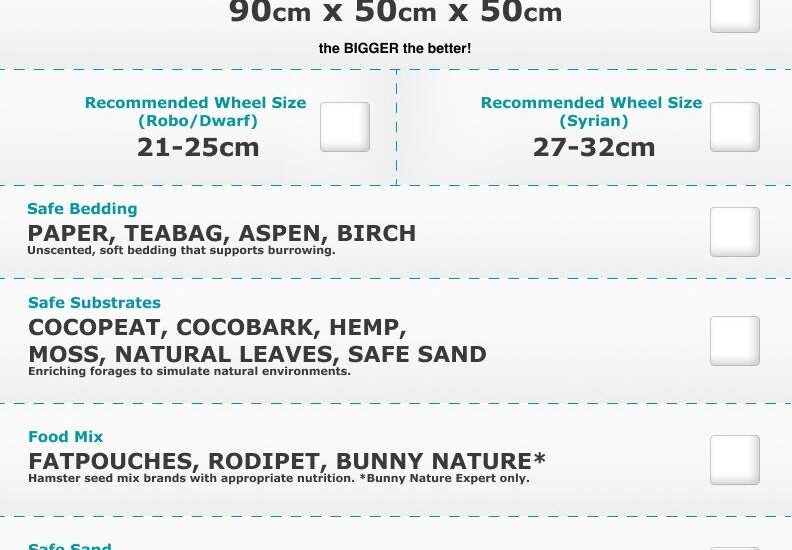Highly Rated Hamster Breeds for Kids
Hamsters, with their adorable faces and playful nature, have long been the chosen pets for children. As one of the most popular small animals, they are not just entertaining but also relatively easy to care for. However, choosing the right breed for your child is crucial. With several hamster breeds available, each with unique traits, understanding which ones are best suited for kids can enhance the pet ownership experience. In this article, we will explore highly rated hamster breeds for kids, focusing on their temperaments, care levels, and what makes them ideal for young pet owners.
In addition to discussing various breeds, you’ll learn about the key factors to consider when selecting a hamster, tips for care, and how it can foster responsibility in children. Additionally, we will provide useful resources and articles for further reading, including links to helpful guides on hamster care. By the end of this article, you will have a comprehensive understanding of which hamsters make great pets for kids.
The Importance of Choosing the Right Breed
When introducing a hamster to your family, it is essential to choose a breed that matches your child’s age and experience level. Some breeds are more docile and friendly, while others may be more skittish or prone to biting. Understanding this difference can prevent mishaps and ensure a positive experience for both the pet and your child.
Factors to Consider
- Temperament: Some hamsters are friendlier than others.
- Care Level: Certain breeds require more maintenance.
- Size and Lifespan: Consider the size of the hamster and how long it typically lives.
- Activity Level: Some hamsters are more active and playful.
Top Hamster Breeds for Kids
1. Syrian Hamster
The Syrian hamster, also known as the golden hamster, is one of the most popular breeds. They are known for their friendly nature and relatively simple care requirements. Syrian hamsters are larger than other breeds, making them easier for kids to handle.
Key Traits
- Size: Approximately 5 to 7 inches long.
- Temperament: Friendly and social with proper handling.
- Lifespan: 2 to 3 years.
:strip_icc()/GettyImages-525140239-8808998be45e4bfa9140ae9dbcfe2d79.jpg)
2. Dwarf Campbell’s Hamster
Dwarf Campbell’s hamsters are small, friendly, and great for kids. They are social animals and can often be kept in pairs. They require more social interaction than some other breeds but can be wonderful companions.
Key Traits
- Size: Approximately 4 to 5 inches long.
- Temperament: Social and interactive with gentle handling.
- Lifespan: 2 to 3 years.
3. Roborovski Hamster
Roborovski hamsters are tiny and very energetic. They are known for being the fastest among all hamster breeds. While they are less likely to enjoy being handled than Syrians or Campbells, they can still be fun pets to watch.
Key Traits
- Size: 3 to 4 inches long.
- Temperament: Active and entertaining; typically not cuddly.
- Lifespan: 3 to 4 years.
4. Winter White Dwarf Hamster
Winter Whites are known for their striking appearances, as they can change color depending on the season. They are also known to be quite friendly and enjoy human interaction, making them suitable for kids looking for a pet.
Key Traits
- Size: 3 to 4 inches long.
- Temperament: Friendly and adaptable with proper care.
- Lifespan: 2 to 3 years.
5. Chinese Hamster
Chinese hamsters are often overlooked but can make excellent pets. They have a unique, long body shape and are known for their friendly disposition. They can live together if introduced properly, which can provide additional entertainment for kids.
Key Traits
- Size: 4 to 5 inches long.
- Temperament: Generally docile but may require gentle handling.
- Lifespan: 2 to 3 years.
Preparing for a Hamster
Before bringing a hamster home, it’s important to prepare a suitable environment. This will ensure the hamster feels secure and comfortable.
Basic Supplies Needed
- Cage: Choose a spacious cage with adequate ventilation.
- Bedding: Use soft bedding material that is safe for small animals.
- Food: A balanced diet formulated for hamsters.
- Exercise Wheel: Essential for maintaining their health and energy levels.
Setting Expectations
While it is important to teach children about the responsibilities of pet ownership, there should also be realistic expectations from the start. Hamsters sleep for a large portion of the day and are most active during the evening, so children may not interact with them as much as they hope.
Conclusion
Having a hamster as a pet can be an exciting and educational experience for children. The highly rated hamster breeds mentioned above offer various characteristics to suit different family needs and preferences. By choosing the right breed and preparing adequately, families can enjoy many happy moments with their furry friends.
As you navigate through the process of selecting and caring for your child’s hamster, be sure to explore further resources such as this article for care tips and additional insights on hamster breeds suitable for kids. Each hamster has its own personality, and with patience and love, they can become cherished family members.
In conclusion, remember that owning a pet is a long-term commitment, and it’s vital to instill love and responsibility in children through this experience. Happy hamster parenting!
